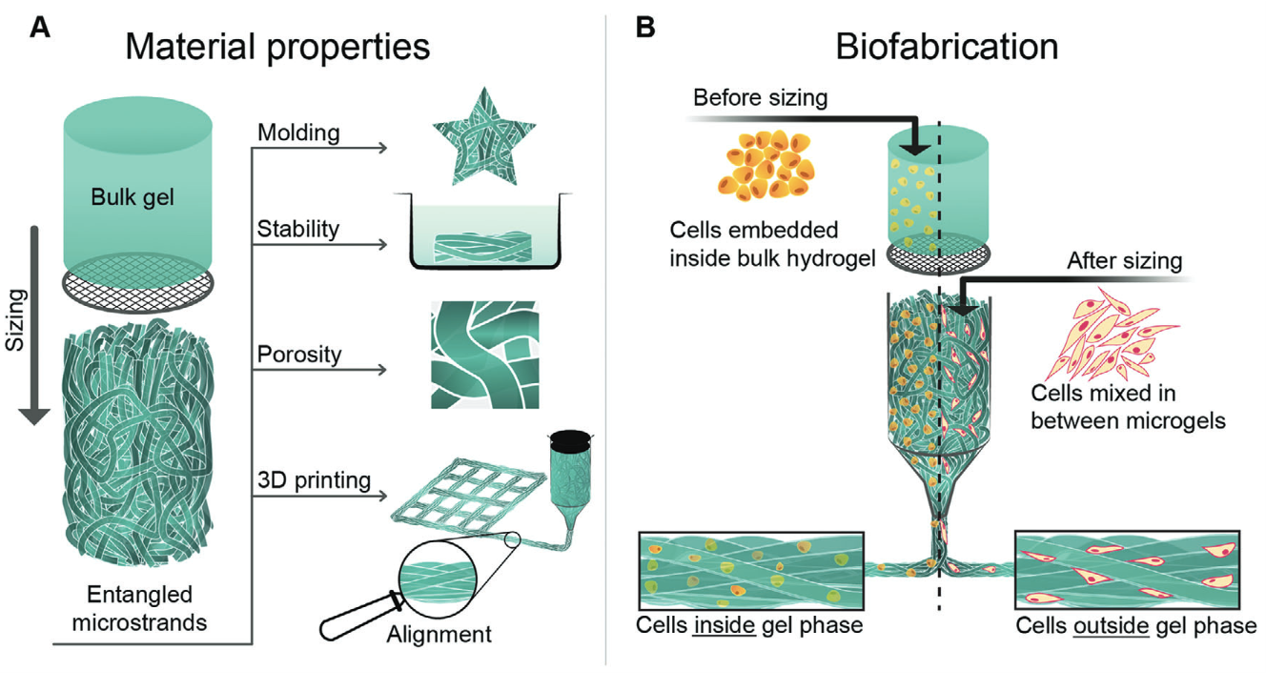Microgel/Microstrands
The intrinsic porosity and modular properties of microgel materials have been shown to improve mass transport diffusion, cell-to-cell interactions and cell migration/infiltration. In addition to these biological advantages, microgel-based bioinks have shear-thinning and shear-recovery properties that are suited to extrusion bioprinting. A simple, straightforward, and fully biocompatible production of 3D micro-structured hydrogels using a mechanical sizing device has been developed, together with a variety of crosslinking methods (i.e., enzymatic, light triggered or chemical) to secondarily anneal the microgels together into a larger and more porous structure. These advanced materials are currently used in cartilage and muscle engineering applications.


Publications:
- 3D bioprinting of macroporous materials based on entangled hydrogel microstrands, B Kessel, M Lee, A Bonato, Y Tinguely, E Tosoratti, M Zenobi-Wong, Advanced Science, 2020, external page https://doi.org/10.1002/advs.202001419
Contact
No database information available
Contact
Gewebetechnol. und Biofabrikation
Otto-Stern-Weg 7
8093
Zürich
Switzerland